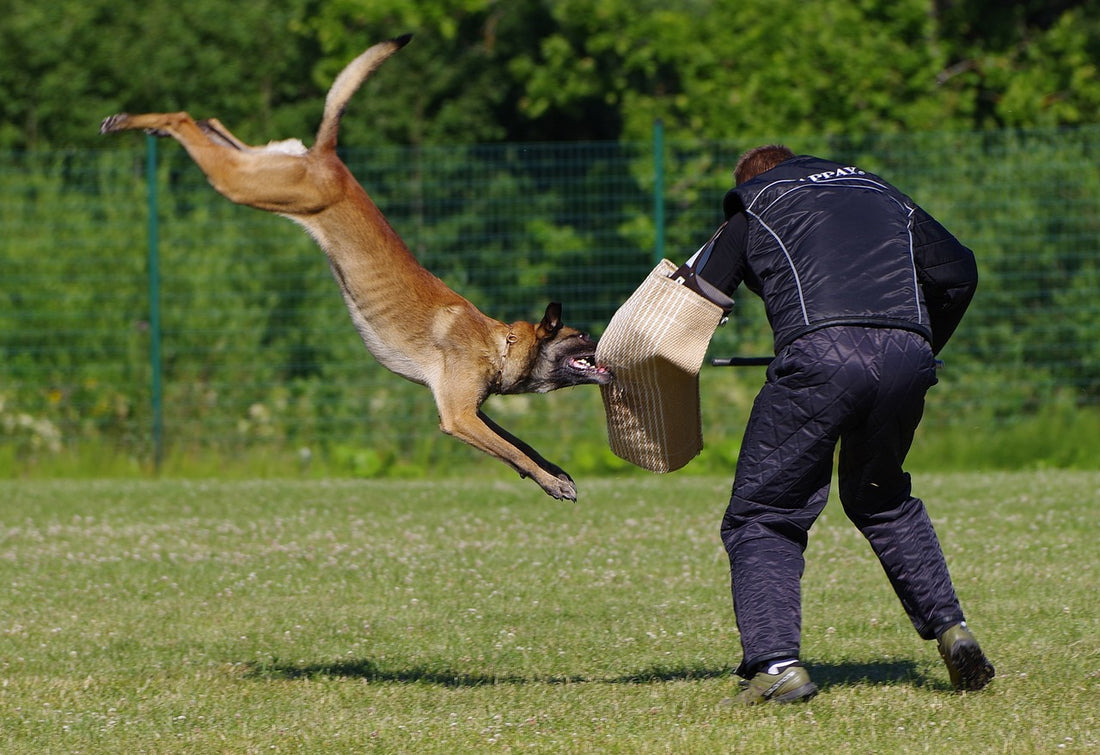
Tutorial: Teaching Your Dog an "Off Switch" with Micro Sessions
Partager
If you're struggling with a dog that has endless energy and can't seem to settle down, you're not alone! Many high-drive dogs don't come with a pre-programmed "off switch," and it can feel impossible to teach them how to calm down. Luckily, there’s a simple method called micro sessions that can help. By pairing high-energy behaviors like tugging or chasing with calm, attentive, and polite behavior, you can teach your dog to transition between active play and relaxed moments.
What Are Micro Sessions?
Micro sessions involve short, focused training periods—only 1 to 3 repetitions at a time—scattered throughout the day. These sessions are designed to prevent overwhelm and build positive habits over time. Think of it as a way to "stack" repetitions, so even if you're short on time, you can still make consistent progress with your dog.
The Key to the "On/Off" Switch
The idea is simple: tie a high-drive activity (like tug or fetch) to calm, obedient behavior. Over time, your dog will learn that the way to get your attention back and continue the fun is by being calm, patient, and respectful. Here’s how to implement it:
Step-by-Step Process:
-
Set the Scene: Start by presenting a tugging toy to your dog. It should be something they love, like a rope or a ball on a rope. The goal is to get their attention and get them excited.
-
Establish Calm Behavior: While your dog is calm and polite (sitting or lying down), start engaging with them using the tugging toy. You’re teaching them that the more controlled and patient they are, the more likely they are to get access to the toy.
-
Shift Your Attention: Once your dog is actively tugging, you should “shift” your attention away. This is the crucial part. You can do this by looking away or focusing on something else, like a client or another dog. When your dog notices this shift, they’ll start to realize that calmness leads to re-engagement.
-
Reward Calm Behavior: As soon as your dog lets go of the toy and shows calm, respectful behavior, immediately return your attention to them and resume the game. The key is to reward them for being patient and calm.
-
Repeat and Build Repetitions: With enough repetitions (ideally 1 to 3 per session), your dog will begin to associate calmness with being rewarded. They’ll understand that in order to keep playing, they must first settle down.
The "Cake and Eat It Too" Concept
This is the "cake and eat it too" problem. In essence, the dog wants to keep tugging, but by being calm and polite, they’ll learn that the reward (you playing with them) only comes when they demonstrate calm behavior. They can’t have both at the same time. This is what builds impulse control.
Overcoming Struggles: Patience is Key
Remember, this doesn’t happen overnight. It may take hundreds or even thousands of repetitions. But as you keep up these micro sessions, you’ll see gradual improvement in your dog’s ability to settle down and switch from high-energy to calm states.
Key Tips:
- Don’t Reward Excitement: Avoid getting caught in the trap of rewarding your dog when they’re overly excited. If they’re tugging too aggressively or jumping, take your attention away until they calm down.
- Be Consistent: Always reward calmness and politeness, and don’t let your dog dictate the terms. The goal is for them to understand that being calm leads to more playtime.
- Avoid Overwhelm: Since you're working in small micro sessions, you can stack repetitions and keep your training moments short and efficient.
By following this method consistently, you’ll see your dog start to develop a strong off switch. This will not only help with training but also allow your dog to be more balanced at home and in public, making them a well-rounded companion.
Final Thoughts
Remember that training is about developing good habits through consistent practice. Micro sessions are an effective way to create lasting change without overwhelming your dog or yourself. Keep up the good work, and with time and patience, your dog will learn how to switch from high energy to calm and composed behavior when needed.